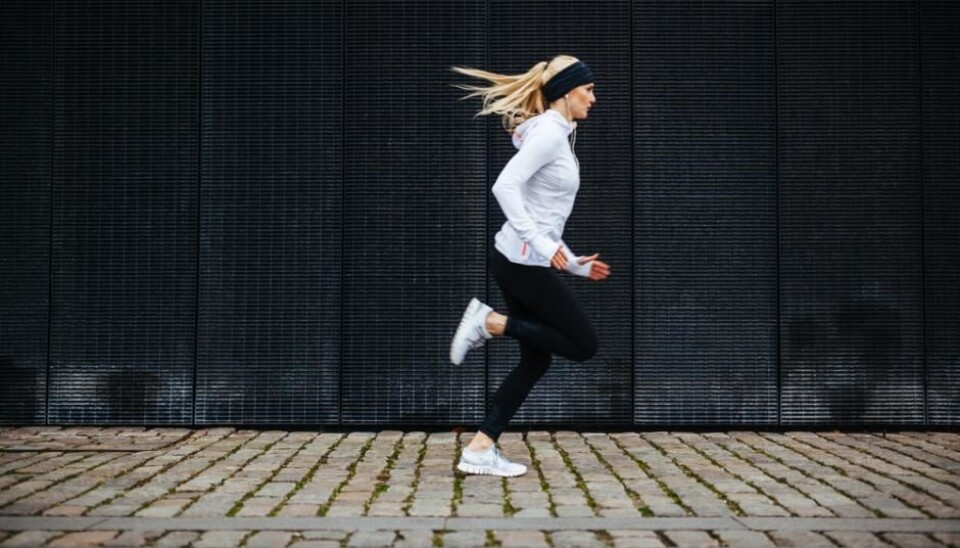
Running can slow the growth of breast cancer cells
Changes that occur in the blood every time you exercise reduce the growth of breast cancer in cell cultures and in mice.
Exercise is well known to reduce the risk of many lifestyle-related diseases.
One of these diseases is breast cancer. Results from large population studies show that physically active people not only have a reduced risk of breast cancer, but also a higher chance of surviving following a breast cancer diagnosis.
This indicate that regular exercise in some form can influence breast cancer cells and reduce the risk of a relapse.
However, it is still not known what is driving this effect. Thus, scientists at the Trygfondens Centre for Physical Activity Research (CFAS) at Rigshospitalet, Denmark, have been studying this in cell cultures and in mice to find out.
Risk of cancer decreases with exercise
Research into the effect of exercise often focuses on the long term effect of training such as weight loss, increased muscle mass, and improved cardiorespiratory fitness.
There is particular focus on how the composition of the blood changes after training for a longer period and how these changes can protect against breast cancer.
Previous studies have shown that the basic concentrations of many risk factors of breast cancer, such as oestrogen, insulin, and inflammatory markers, can decrease with training, especially if training also induces weight loss.
Exercise changes the composition of blood
Scientists have to a lesser extent focused on the changes that occur in the blood during each acute exercise bout.
The concentration of numerous hormones and proteins increases significantly, and then decreases again in the hours following physical activity.
People that perform regular exercise create two changes in their blood composition. First, long term changes where the basic levels of risk factors for breast cancer can be reduced, because your physical fitness improves. Second, repeated changes that occur every time you exercise, where ‘exercise factors’ increase to higher values.
In our research group we wanted to investigate how these two different exercise-created changes in blood composition would influence the growth of breast cancer cells.
It happens while we exercise
In the laboratory, we measured the growth of breast cancer cells in blood serum—the part of the blood that does not contain any blood cells and coagulants.
The blood was collected from two groups of women who had undergone surgery for breast cancer. One group took part in a six months training study, and the other group took part in two hours of supervised exercise.
We saw no difference in the growth of breast cancer cells in blood from women after six months of training compared with blood collected before the training period.
This was despite the fact that the women’s physical fitness improved, and the basic levels of several risk factors in their blood were reduced.
In the blood sampled from women who had just exercised, we saw a reduced growth of the cancer cells compared with the blood taken when the women were relaxed.
This suggests that the composition of the blood had changed during exercise and that these changes can directly reduce the growth of breast cancer.
Get your pulse up to fight breast cancer
Through some comprehensive studies in breast cancer cells and mice we investigated which of the changes that would restrict the growth of the cancer cells.
We discovered that the anti-cancer effect of intense exercise in our studies was driven by an increase in the blood level of two hormones: adrenaline and noradrenaline.
The concentrations of these hormones increase quickly in the blood during intense exercise where the pulse rises to high values.
By blocking the effect of adrenaline and noradrenaline in the studies, we saw that the growth-inhibitory effects on the cancer cells disappeared.
Furthermore, in the mice studies, half of the mice developed a tumour if the cancer cells had been grown in blood taken from women just after exercise, compared with mice who received cancer cells grown in blood from women who were relaxed.
Here, it was possible to remove the inhibitory effect on tumour development completely if the effect of adrenalin and noradrenaline was blocked.
One of our ongoing projects also shows that specific proteins called myokines, released from contracting muscle cells, can reduce the growth of breast cancer cells.
Hard work pays off
Our studies suggest that the accumulated effects of these changes in the blood during exercise can have a direct beneficial impact in the fight against breast cancer.
According to our results, aerobic training such as running or cycling, where you become breathless and sweat, is best at creating these changes in the blood, which can have a direct growth inhibitory effect on breast cancer cells.
The next step is to conduct larger studies in cancer patients, which will clarify whether there is also a direct effect on the tumours during exercise and whether this effect is driven by the rise in blood levels of adrenaline, noradrenaline, and proteins from the muscles.
---------------------
Read more in the Danish version of this story on Videnskab.dk
Translated by: Catherine Jex
Scientific links
- 'Every exercise bout matters: linking systemic exercise responses to breast cancer control', Dethlefsen, C., Pedersen, K.S., and Hojman, P. (2017)
- 'Exercise regulates breast cancer cell viability: systemic training adaptations versus acute exercise responses', Dethlefsen, C. et al. (2016)
- 'Physical activity and survival after breast cancer diagnosis', Holmes,M.D., Chen,W.Y., Feskanich,D., Kroenke,C.H., and Colditz,G.A. (2005)
- 'Association of Leisure-Time Physical Activity With Risk of 26 Types of Cancer in 1.44 Million Adults', Moore,S.C. et al. (2016)









